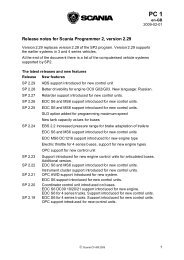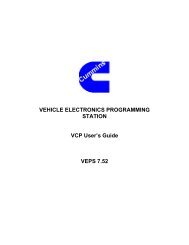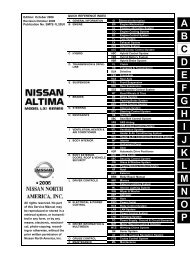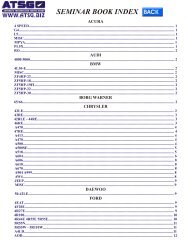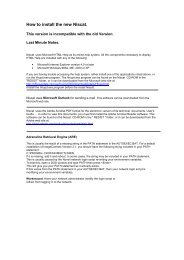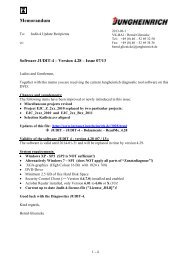Vogele Basic Training Hydraulics & Electrics
Vogele Basic Training Hydraulics & Electrics
Vogele Basic Training Hydraulics & Electrics
You also want an ePaper? Increase the reach of your titles
YUMPU automatically turns print PDFs into web optimized ePapers that Google loves.
E.9.0 Fuses<br />
What is a fuse<br />
The weakest component in an electric circuit is always the first<br />
to be destroyed. The circuit is then broken. This component is usually<br />
the fuse. The task of a fuse is to protect electric devices and circuits.<br />
A fuse never serves to protect humans under ANY CIRCUMSTANCES.<br />
A fuse only protects against an overload (i.e. too much current flowing<br />
through the circuit) or a short circuit (low-ohm connection of two<br />
potentials). A fuse always has a nominal current. If this nominal current<br />
is exceeded, the fuse blows.<br />
What does a fuse consist of<br />
Glass fuse<br />
Automatic<br />
circuit breaker<br />
A fuse essentially consists of a stable housing and a wire that melts<br />
in the event of an overload or a short circuit.<br />
The fuse thus ensures that the circuit is broken safely.<br />
A fuse must never be repaired or bridged!!!!!<br />
There are slow blow fuses (T) and fast blow fuses (F). Slow blow fuses<br />
blow later than fast blow fuses. The housing usually indicates whether<br />
the fuse is a slow blow fuse or a fast blow fuse.<br />
We distinguish between 5 categories:<br />
Super fast (FF), fast (F), medium fast (M), slow (T), super slow (TT)<br />
Car fuse<br />
Fuses used at VÖGELE:<br />
Low-voltage high-power fuses<br />
(heater – 230 V AC)<br />
Car fuses (switch box – 24 V DC)<br />
Glass fuses (heater control)<br />
Low-voltage<br />
high-power fuse



